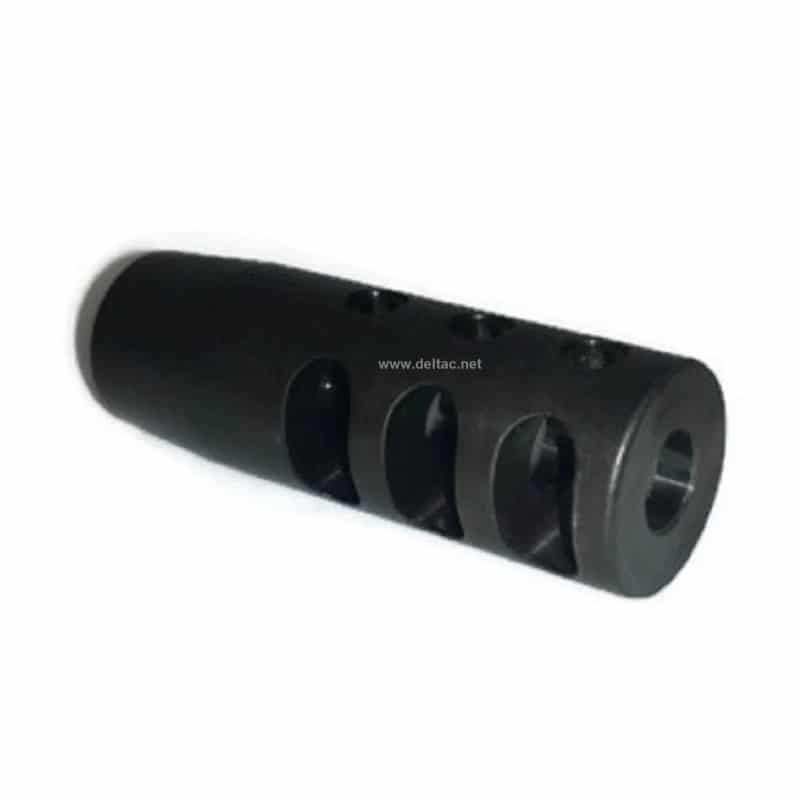Best Mosin Nagant Muzzle Brakes
Government constraints are not the only laws that may sometimes seem hard to gun collectors. The laws of physics may also be problematic. Also, Isaac Newton’s 3rd law of action and reaction can be a real pain in the throat – or at least the shoulder. Many firearms have a nasty backlash after being fired thanks to the gun reaction to of the bullet being pushed down the gun barrel. The Development of a Concept. The concept of muzzle brake began to be implemented as early as the 30s, first in the field artillery and afterward on many anti-tank guns.
The system was active, and soon armies started to scale down muzzle brakes for little army arms, that were not so modest because they were troublesome anti-tank rifles. After World War II, muzzle brake designs came into use on sporting rifles mainly restricted to custom guns. Muzzle fractures are now standard on even relatively feeble 223 caliber rifles. Before World War I, the British discovered that 15 ft. Lbs. Of low rebound power was the maximum allowable for the service rifle. Above this level, recoil might leads to a gun headache and shooters flinching. The British 303 Lee Enfield infantry rifle was below that figure, but the Russian Mosin Nagant produced 15 feet.
Lbs. Of free recoil energy chambered in rimmed 7.62x54R. For contrast, the iconic American 30-06 cartridge generates about 20 ft. Lbs. Of recoil energy when fired out of M1903 Springfield. The theory behind a pistol brake is to partially divert the combustion gases to counteract the rebound and undesirable climbing of the barrel that follows the fire of the gun. These days, the construction of a muzzle brake – sometimes called a compensator – could change. There’s a simple diagonal cut at the muzzle end of the barrel like on the AKM. But there are even more advanced designs with baffles and expansion chambers at impede escaping gases.
Taming Mosin Nagant. Most gun enthusiasts agree that Mosin Nagant burns a full powered cartridge is on the top scale of tolerable recoil for the average shot. With that in mind, muzzle brakes are an essential part of the project of changing A Mosin Nagant to a sporting rifle that is more controllable and much more pleasant to take. With the increasing popularity of this old warhorse in civilian markets, the business provides a vast array of unique apparatus as an upgrade to an older gun. Muzzle Brake Types. There are dozens of Mosin Nagant muzzle brakes .
In general, they’ve split into two categories by barrel coupling permanent or clamp-on brakes. The strong muzzle brakes ask you to thread your barrel and do allow the option for additional accessories as a suppressor where is it lawful. Clamp or bolt mouth brake attaches externally behind or around the front sight base and is secured by screws.
Gunsmiths confirm that the best method of installation will be threading the rifle’s barrel. This provides safety and accuracy. Additionally, these brakes tend to last longer and are far much more effective than clamping models. And on the other hand, one of the leading advantages of the clamp-on brakes is the affordability and simplicity of mounting. They also maintain the historical and financial value of your mosin naganta. As you probably realized by now, the fixed muzzle brakes need barrel threading. This should be done by a gunsmith. The cost usually runs from $50 to a few hundred dollars.
That may be from half to double the cost of the gun. However if you would like a safe, dependable job, do not go inexpensive – a $10 threading usually isn’t good for the gun for you personally. But, there are a few other issues in the technical aspect. The standard Mosin Nagant rifles, especially those made during wartime, do not comply with rigorous measurements and standards. Among the problems is that a lot of them don’t have flawlessly centered concentric bores. That implies that the external threads might not be harmonious with the diameter of the bore, so inducing tighten the inflatable muzzle brake to be off kilter.
Additionally, the Mosin owner ought to know that a standard 7.62 or 30 caliber brake won’t work. Soviet weapons commonly utilize a 7.92-millimeter groove diameter with a ground diameter of 7.62mm. At the top of this, soapy ammo has caused, the PU Sniper rifles to have bore diameters up to 313. So the only choice is to utilize a muzzle brake specially designed for the Mosin Nagant. Some Drawbacks. Muzzle brakes have a positive impact on recoil reduction, taming muzzle increase, flash concealing, and ground disturbance. Nonetheless, this small artwork will also add a while and mass to your rifle.
This increases its inertia and moves its center of mass forward, altering the balance. Another side effect due to some designs has led to the device being nicknamed a loudener. By redirecting the gas into the sides and upwards, the brake can increase the sound signature of a supersonic bullet. It is enough to need to double up on the hearing protection when shooting a whole lot. And for this reason, muzzle brakes are also prohibited on specific shooting ranges.
